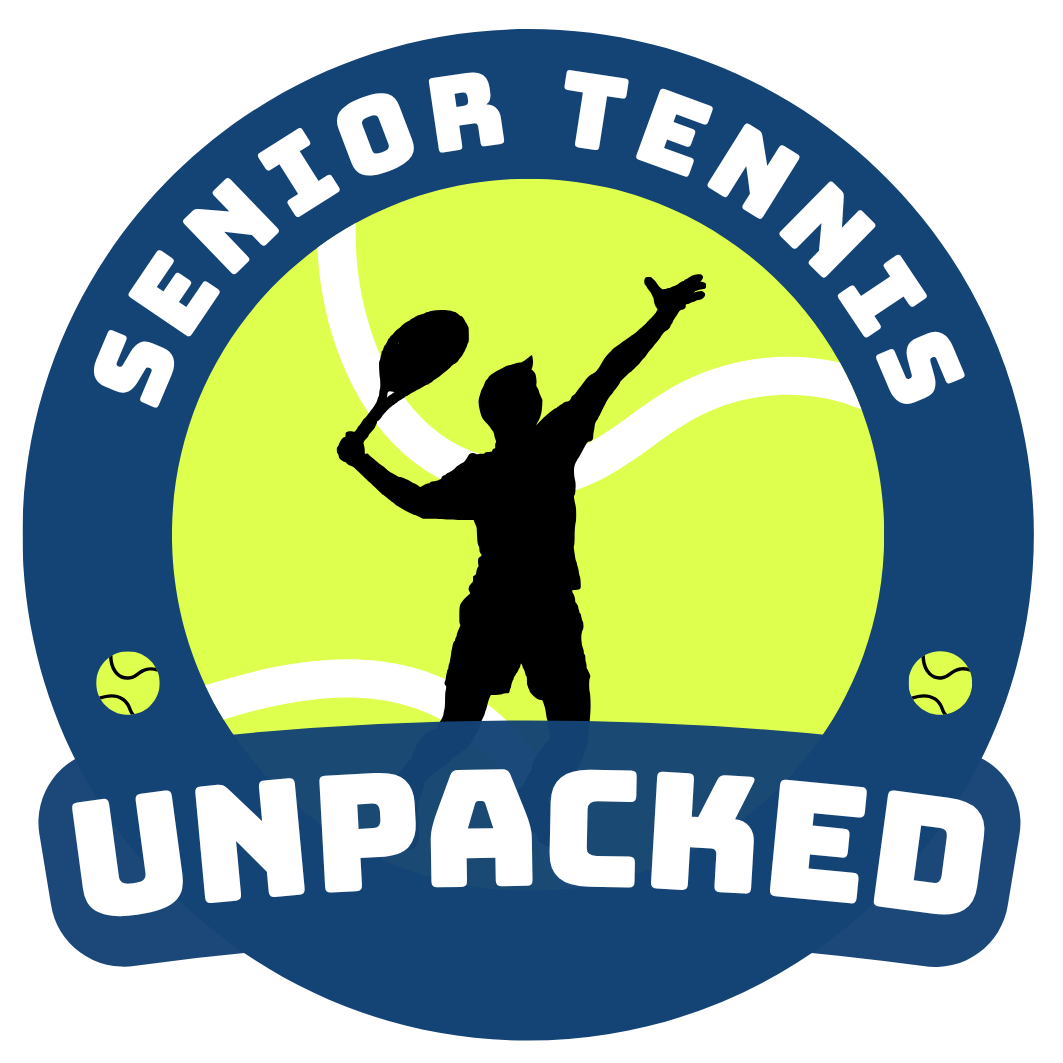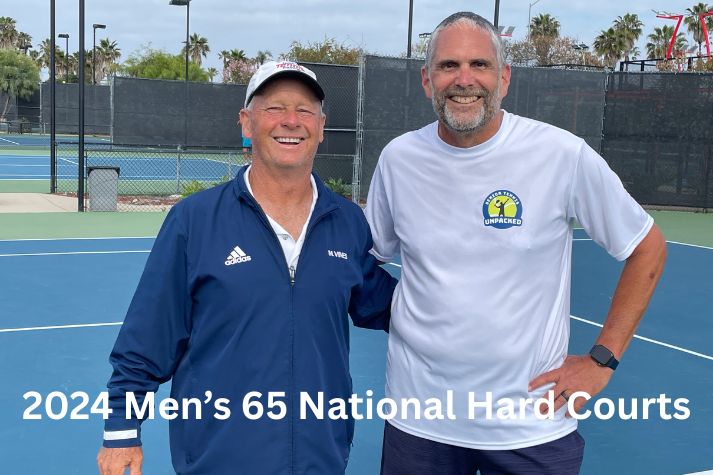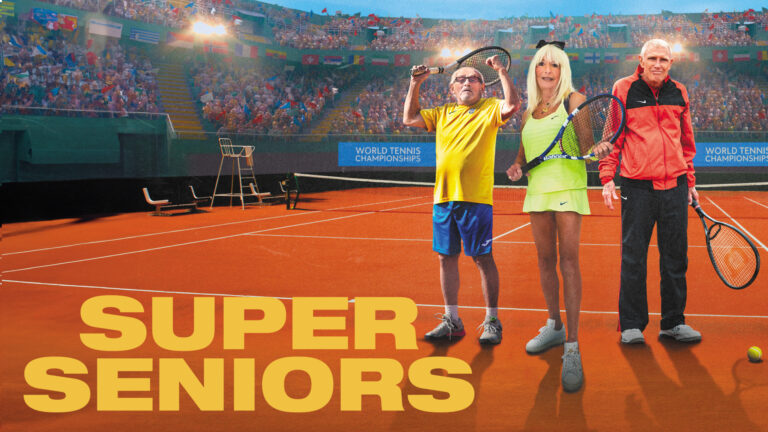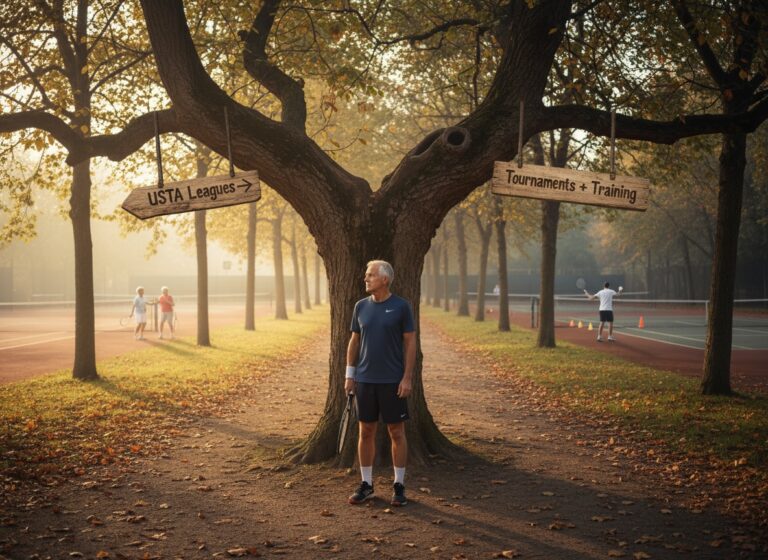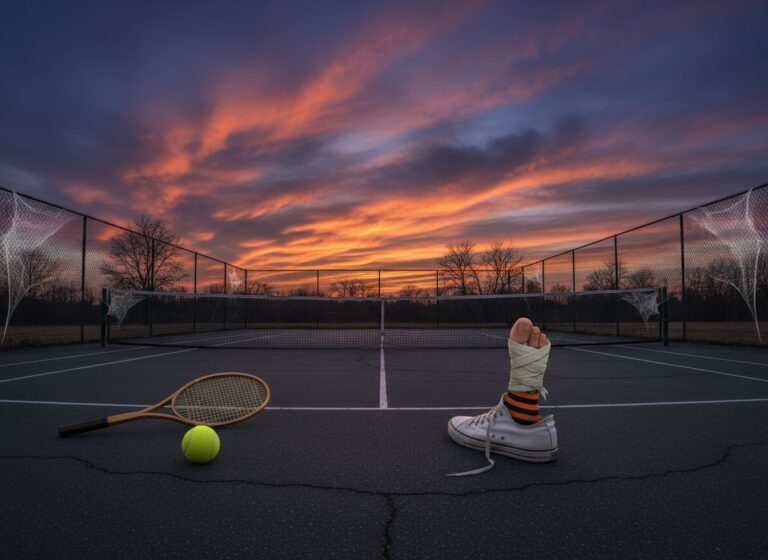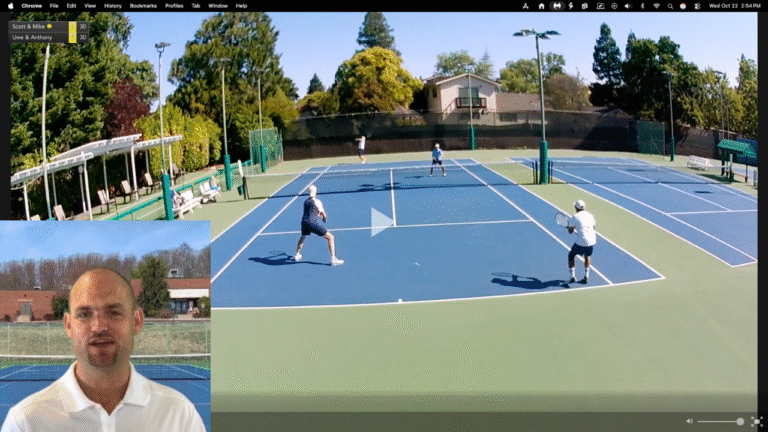When I sat down with Mark Vines to analyze one of my matches, I expected him to tell me my forehand needed more topspin, or that my backhand still looks like I’m trying to swat a mosquito. Instead, he started with something completely different:
“Mike, the problem isn’t what you’re doing before you hit the ball. It’s what you’re doing after.”
Let’s unpack that (pun intended).
The Forgotten Half of the Shot
Most of us seniors (myself included) grew up hearing the mantra: “Watch the ball.” And yes, it’s important. But Mark pointed out there are two halves to every shot:
- Preparing while the ball is coming toward you.
- Reacting after the ball leaves your racquet.
Guess which half I’ve been skipping?
Instead of watching my opponent after I strike, I stand there admiring my ball like I just painted a masterpiece. Meanwhile, my opponent is already taking the racquet back, planning how to make me look silly.
The fix? As soon as I make contact, I need to shift my eyes to my opponent. Watch his shoulder turn, his balance, his take-back. That tells me whether he’s desperate or comfortable — and how I should move next.
Movement comes down to two options: attack or recover. Standing still is not one of them, though I’ve apparently perfected that third option.
Threatening the Net (Even if You Don’t Live There)
Mark reminded me there are only three basic formations in singles:
- Baseline vs. baseline.
- Me staying back, opponent coming in.
- Me coming in, opponent staying back.
Notice that two out of three involve someone attacking. Guess how often I attacked? Not enough.
The point isn’t to serve-and-volley like it’s 1975. The point is to threaten the net often enough that my opponent feels uncomfortable. Even if I get passed a few times, the idea that I might come in changes the dynamic.
Mark told me flat out: “If your opponent never feels threatened, he gets to hit whatever he wants, whenever he wants.”
And if you’re wondering — yes, that’s exactly what happened.
Practicing Pressure Before Pressure Finds You
Another big takeaway: I’m losing too many games when I already had game points on my racquet.
The solution isn’t just playing more sets. It’s practicing under pressure in specific ways:
- Start every game at 30–30. That way, every point is a big point. You rehearse the same emotional and physical stress you’ll face in real matches.
- Play with one serve only. Turns out, you’ll double fault less than you think. Plus, your opponent won’t know whether you’re going for it or just rolling it in.
Mark framed it with an equation worth writing on your racquet bag:
Discipline → Control → Confidence
And confidence, especially for us seniors, is the ultimate performance enhancer.
Serve and Survey
This might have been my favorite nugget from Mark: “Serve and Survey.”
Every time I serve, I should step one stride inside the baseline and survey what comes back. Not charging the net every time, but always moving forward at least one step.
Why? Because psychologically, we’ve all been trained since childhood to “stay behind the line.” Staying back makes me passive. Stepping in — even just a stride — shifts my mindset to being aggressive.
As Mark put it: “Lines are for umpires, not for your feet.”
Building Multiple Game Plans
Mark hammered home that improvement isn’t just about winning; it’s about whether I can coach myself during a match.
He wants me to have multiple plans:
- Plan A: My normal baseline rhythm.
- Plan B: Get aggressive — attack earlier, take the ball on the rise, come in.
- Plan C: Go into “ball-counter mode” — just out-steady the other guy.
The skill is not sticking with one plan until it fails spectacularly, but shifting in real time: “Okay, Plan A isn’t working. Time to switch.”
That’s where the growth is.
Footwork: Move Without the Ball
Another humbling reminder: I sometimes hit the ball and then… stand there. Like a senior statue.
Mark caught several clips where I hit and froze, even when my opponent was way behind the baseline. Those were golden opportunities to move in and take control, but I retreated instead.
The lesson: ebb and flow between positions. If I hit short, back up to give myself time. If I push him deep, step inside the baseline. Keep adjusting.
Standing still is rarely correct. (Apparently, I need that tattooed somewhere.)
Big Points Are Different
Mark asked how I handle big points like 30–30. I admitted I “focus more.” He laughed and told me: “That’s not enough. Admit it’s a big point, then give yourself a ritual.”
He uses small physical cues — tapping the baseline with his racquet, knee bends before a big serve — to tell his brain: focus now.
He also likes the mental reset: “Discipline → Control → Confidence.” That way, big points become opportunities rather than landmines.
I realized in the tiebreak I actually did this instinctively — locked down, cut out the errors, and made a high percentage of first serves. Mark called it my “Djokovic lockdown.” (If only my bank account looked like Djokovic’s too.)
Patterns and Targeting
One of the more nuanced lessons: don’t just attack the weaker side.
Sure, opponents may have weaker backhands offensively. But defensively, many players are stronger on that side because everyone attacks it. Sometimes, going after their “strong” forehand actually causes more errors.
The real key is knowing:
- Which side they struggle with when defending.
- When in the rally to attack. (Earlier is usually better, before they settle into rhythm.)
It’s less about hitting to the obvious weakness and more about disrupting their comfort zone.
Slice Backhand and Shot Variety
Mark couldn’t resist reminding me: I need a true slice backhand. My current version looks more like a pushed bunt. Without variety, opponents read me too easily.
He also listed the five ways to play more aggressively:
- Hit harder.
- Add more spin.
- Aim closer to lines.
- Take balls earlier (on the rise).
- Serve and volley.
In other words: give opponents a reason to feel threatened.
The Three-Note Journal
Finally, Mark gave me a system I can actually implement after every match:
- Write down three things I did well.
- Write down three weaknesses.
- Note what I’d do differently if I played the same opponent again.
This way, when I face that guy in six months, I don’t have to rely on my memory (which these days is mostly reserved for remembering where I left my readers).
Funny enough, I once tried building an app to do exactly this — a place to record match notes and opponent tendencies. I eventually shut it down, but the idea still rings true: being able to look back at your own match play (and your opponents’) is like scouting a league match with an NFL-style playbook. Even without an app, the principle remains the same — write it down, review it later, and use it to play smarter the next time.
Closing Thoughts
Mark’s analysis left me both encouraged and exposed. The good news: I’m not far off. The bad news: I’ve been leaving a lot of free points on the table by admiring my shots instead of preparing for the next one.
Here’s what I’m committing to:
- Shift my eyes to my opponent after every shot.
- Add the “Serve and Survey” habit.
- Practice pressure points by starting games at 30–30.
- Develop a real slice backhand (not a bunt).
- Build the courage to threaten the net, even if it means getting passed.
Because at the end of the day, senior tennis isn’t about being perfect — it’s about being smarter, more disciplined, and yes, more self-aware than the guy across the net.
And if nothing else, I’ll stop standing like a statue after hitting.
Your Turn
I’d love to hear your stories from the court — what lessons have you learned the hard way, and what little habits have made the biggest difference in your game? Share them in the comments or send me a note.
If you enjoyed this post, make sure to subscribe to Senior Tennis Unpacked so you’ll be notified when new articles come out.
And if you want to go deeper, check out Insider’s Playbook — my new interview series with senior tennis coaches, players, and experts sharing strategies you won’t find anywhere else. SPOILER ALERT, our next episode dropping 9/30/25 is an interview with Mark Vines
